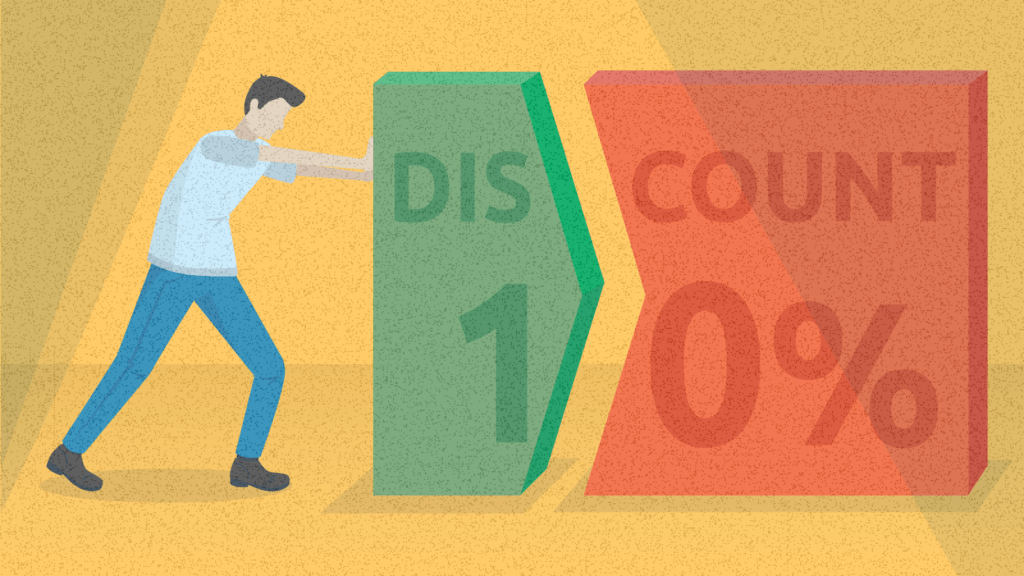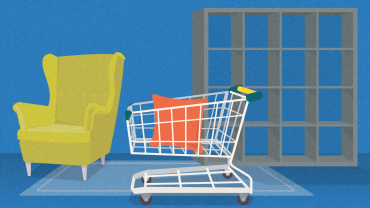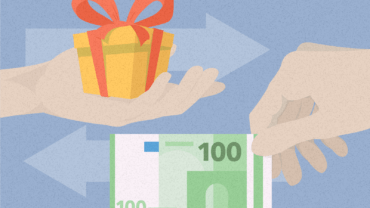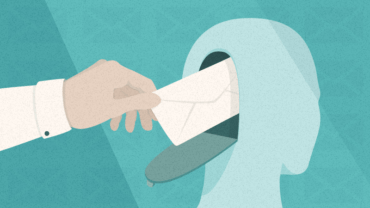Make Customers Earn Their Discounts Advise Psychologists

Quite often, marketers view price reductions as the best sales strategy. It is, however, crucial to understand how to implement discounts without lowering the product or service’s perceived value. That is why providing earned discounts can be a sound strategy.
In this article, you will discover:
- Why reducing prices isn’t the best customer attraction strategy;
- What is an earned discount and how to provide it; and
- Why giving earned discounts increases the perceived value of the discount.
Think of that one boutique around the corner that always has a sale on. You walk past it almost every day but never see any customers inside, despite their efforts. You already know the rest of the story – the discounts keep increasing to the level of 75%, but the sob story continues, and finally, the shop shuts down. ‘What could be the reason,’ you wonder. Maybe the products or salespeople weren’t good enough, or maybe, it was sheer bad luck. You don’t give it too much thought and carry on walking.

Discover ground-breaking ideas and fascinating solutions.
But exactly opposite that store, there’s a very similar boutique that occasionally catches your attention. What’s surprising is that there’s no flat discount offer there. Instead, there’s a banner that mentions, “Get a free pair of shoes of your choice, worth 100 Dollars, when you spend 500 dollars.” That store somehow seems more appealing. It sparks your interest even more because you see a number of people buzzing in and out with bags full of clothes.
Mathematically and economically, shopping from the first store is lighter in your pocket. But can the preference for the second store be attributed to luck, or is there some deeper science behind it?
Let’s find out.
How Renault made customers earn their discount
A blog post by Dave Trott describes a case study that dates back to the 1960s in New York. Renault wanted to get rid of all their Dauphine car models from the previous year to make space for their newer models. They tried the conventional method of lowering the price, first offering a $500 discount, then offering deeper and deeper discounts. But this just wasn’t working – no one wanted to spend money on the old models.
Then George Lois, the legendary New York ad man, stepped in with an understanding of consumer psychology. In simple words, he knew that people would value the discount more if they put in some effort to obtain it, rather than it being provided for free.
So, Lois proposed the concept of giving customers earned discounts instead of lowering the price. The idea was simple, low-cost, and resulted in a masterstroke. He created a small nick in the paint of each car in hard-to-find places and then covered it with a Band-Aid. Next, he published an ad saying if customers could spot the flaw in the paintwork of the Renault Dauphine, then they would get $500 off.
And what was the result? Voila! Dealers were sold out of the cars by lunchtime on the day the ad appeared!
People value the discount more if they put in some effort to obtain it, rather than it being provided for free.
To view more of such fascinating case studies, check out this course by Rory Sutherland.
What are earned discounts?
As the name suggests, an earned discount is when the customer is required to put in some effort to be entitled to that discount.
And what makes this a good strategy? Research suggests that when a customer is involved in the process of acquiring a discount, they generate positive emotions and have stronger motivation to complete the task.
Research suggests that when a customer is involved in the process of acquiring a discount, they have stronger motivation to complete the task.
Quite often, offering free discounts creates a perception of a low-quality product and decreases the perceived value. Unconsciously, customers are uncertain whether it is being sold to them to get rid of old stock or because of a defect. Additionally, giving discounts deemphasizes the price and worth of the product. Therefore, customers are more likely to only re-purchase it during the next sale because paying the whole amount feels unfair.
So, rather than focusing on the discount, it is crucial to examine how to give the discount. Making customers earn their discounts can be a powerful strategy.
2 ways to provide earned discounts
1- Give discounts when customers complete an activity
In the case of Renault, buyers instantly switched from not wanting to purchase the product to want to buy the car. But why did that happen? Simply put, according to the principle of the IKEA effect, when people put effort into something, it becomes more valuable to them than its objective value.
In this case, the Renault Delphine campaign presented the challenge of finding the nick in the car’s paintwork. If customers found it, they got $500 off. The dialogue changed from, “The company is offering $500 off to everyone to sell their old models” to “I exclusively got $500 off because I was clever enough to spot the nick.”
And what’s more, it also prevented customers from assigning lower worth to the car and ensured its perceived value and originality. It’s simply because customers did not view this car as a leftover, but a brand new car that was available at a discounted price for them.
Read more about Ikea’s product placement strategy of giving customers earned discounts below.
Offer discounts to customers who meet a goal
In Behavioral Economics, there is a phenomenon known as the goal gradient effect. It means that if customers feel they have already made some progress towards a goal, they are more likely to complete it.
When a buyer believes that they are close to earning a discount, they are more likely to buy more products or services to meet the required amount.
Loss Aversion
We are roughly 2.5 times more sensitive to losses than we are to gains of similar size. A message framed as a potential loss might therefore be more persuasive.
Similarly, when a buyer believes that they are close to earning a discount, they are more likely to buy more products or services to meet the required amount. This principle is what the second boutique store mentioned earlier in this article thrived on. Not spending up to 500 dollars and so not earning that free $100 pair of shoes would feel like a loss and an unwise decision.
Research shows that customers take pride in being termed as ‘Smart Shoppers.’ In cases where brands use loyalty points, customers believe that they have come out on top against the brand by extracting lots of discounts. But in reality, to meet the goal, they have made impulse purchases and helped the companies increase their profits.
In conclusion, as Simon Moore quotes, “There’s more value in things we put more effort into. If you make it too easy for me to buy stuff, it’s really easy for me to leave as well.”
Key Takeaways:
- Focus on how to give discounts. Instead of simply reducing the price, make customers earn the discount. This ensures that you don’t degrade the perceived value of the product in the eyes of your customers.
- Give discounts at the end of a task. If your customers put in the effort to complete a task or activity which leads to a discount as a reward, they’re more likely to utilize it.
- Provide discounts if the customer meets a goal. Humans are motivated to complete goals if they have made some progress towards them. So, we are more likely to work towards the discount, even if it means making impulse purchasing decisions.




